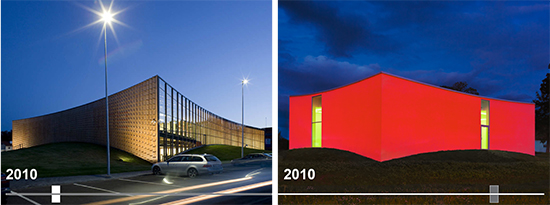
At the end of 2012, the architecture media was in an uproar by this der Spiegel article about a copycat building of Zaha Hadid’s SOHO Beijing hotel being built by a developer in Chongqing, China. At the time, I wrote my own response that referenced several other articles and photo galleries posted by architectural media sites comparing other buildings these publications presented as copycats of each other. My gut reaction to many of these pairings was “Really?” In other words, can two buildings that are built in different parts of the world, by different architects, for different clients, for different programmatic uses, that look somewhat similar in a photograph really be called copycats of each other? Isn’t architecture more than just a single photographic angle?
To explore whether there was any basis for this idea of copycat architecture, I researched several of the projects compared by Architizer to determine whether or not their examples really constituted copycat architecture and presented them to our office in an Architecture Forum. Between each set of buildings I compared six characteristics that impact how we actually experience buildings, in addition to the exterior image that is often the sole characteristic presented by the architectural media. These characteristics include each building’s regional context, immediate context (or site), scale, program, relationship between interior and exterior and material. The more of these characteristics that the case study projects shared the closer one’s experience of those buildings might be. With the exception of the Hadid SOHO Beijing pairing, the experience of architecture is so multi-faceted and layered that calling the other examples copycat architecture shows a shallowness of understanding that we as architects would hope the architectural media and public would be better educated than to promote.
To view my presentation, click here.
The discussion that followed in the Architecture Forum was thought provoking and wide ranging. Most of the participants agreed that labeling these projects as copycat architecture was, for most part, irrelevant to the experience of those buildings. From there the conversation developed to cover a wide range of issues related to image, experience of architecture and innovation. A few highlights from our discussion:
- Whether architecture firms need to protect our designs and intellectual property.
- As a profession we need to do a better job of educating the public about the value of architects and architecture so that the average person has an understanding of the variety of considerations that contribute to making an individual work of architecture.
- The role that the quality of details and materials play in our experience of architecture.
- How innovation relates to the idea of copying and the difference between spending the time to design a high quality and innovative building and copying.
- The historic role of copying buildings, styles and techniques in architecture and the relationship of that tradition to modern practice and innovation.
The conversation was multi-faceted, but at the core, we agreed while the architectural media, and even sometimes clients, might want a unique image for their building, when faced with the fact that there are other buildings out there that may look somewhat similar to our own, the response of most architects is: “Who cares?”


